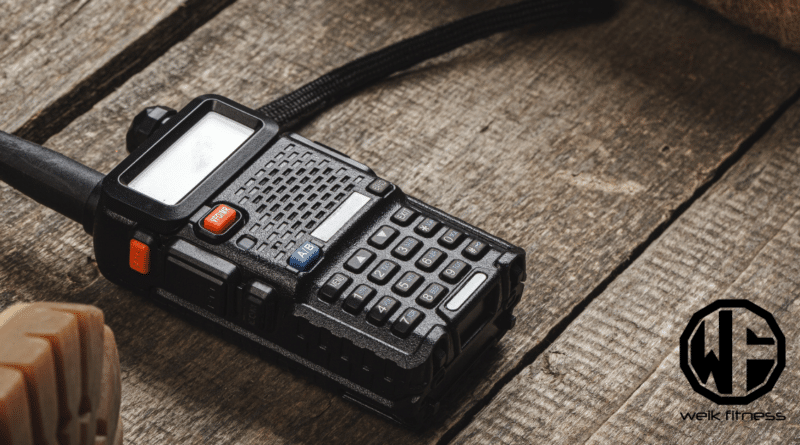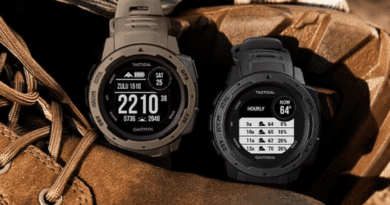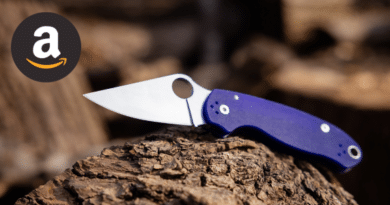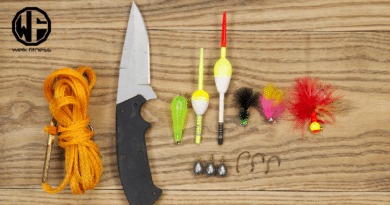Ham Radio: A Two-Way Radio Can Save Your Life
If you’re reading this article, hopefully, you already understand the need for a ham radio or two-way radio, but for the rest of you, there’s a high probability that you’re looking at us as if we are either radio nerds who geek out over frequencies and watts or we’re some sort of tin-foil hat conspiracy goon that thinks the world is going to end and we need to communicate with the only other survivor on this planet via a radio.
Either way — you’re right.
Just kidding. But in all seriousness, I’ve always valued the use of a radio and its benefits and up until recently, I had no grasp as to what the heck I was doing with them. Sure, I had them programmed with all the channels via the CHIRP software of my Baofeng UV-5R, but other than being able to change memory channels and frequencies, I really didn’t know much of anything else.
But the fact of the matter is that when disaster strikes, effective communication can be the difference between life and death. Many of us have experienced those moments when we’re stranded without help, and our cell phones are completely useless due to not having a signal. If you had a ham radio or two-way radio, things may have been different.
That’s where a ham radio comes in as a crucial lifeline in your preps. Our practical beginner’s guide will help walk you through using two-way radios during emergencies. With some basic skills, you’ll be equipped to reach out for assistance or even help save lives when traditional communication methods fail.
The last thing you want to do is wait until it’s too late — learn how to harness the power of a two-way radio for when you need it most.
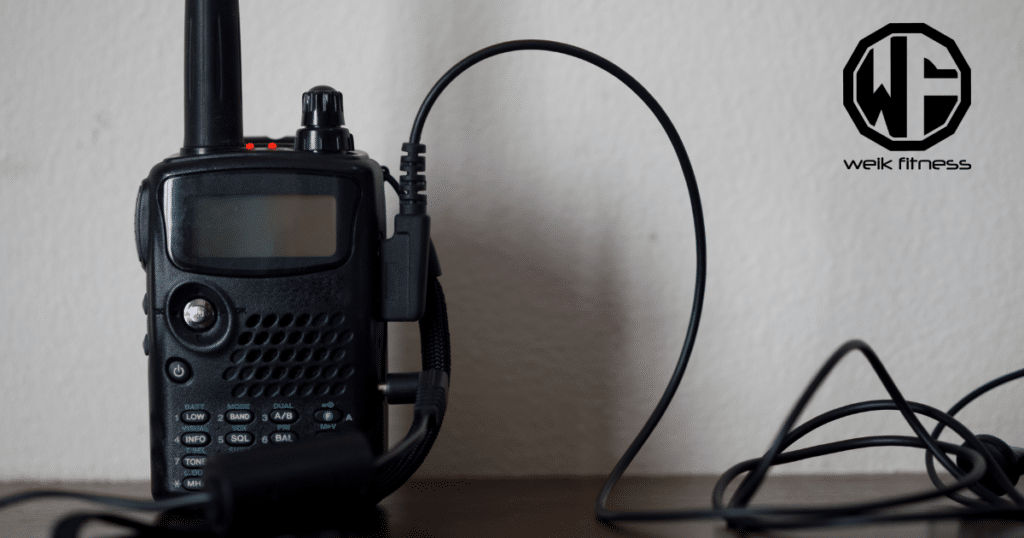
Now, to preface this entire article, I am no ham radio or two-way radio expert. That said, I’ve done a ton of research and was able to take a radio class (more on that in just a little) that provided me with enough knowledge to at least get this information out to you so that you can start your own journey toward becoming better prepared.
With that out of the way… Let’s dive in!
Note: To use the full capabilities of your two-way radio, it is recommended that you get your ham radio license to be an amateur radio operator. The Federal Communications Commission (FCC) isn’t a fan of random people jumping on a frequency and broadcasting. With an amateur radio license, you can transmit and speak with others on a wider spectrum of frequencies and jump in with an amateur radio club to stay engaged in the community.
Table of contents
Key Takeaways
- Ham radios work when cell phones and internet fail, making them vital in emergencies.
- Basic ham radio skills can be learned quickly, though getting better takes time.
- Ham radios helped during big events like 9/11 and Hurricane Katrina.
- Key gear includes transceivers, antennas, and power supplies.
- The Tremis Dynamics Day 0 course teaches radio use, and I highly recommend you take the class.
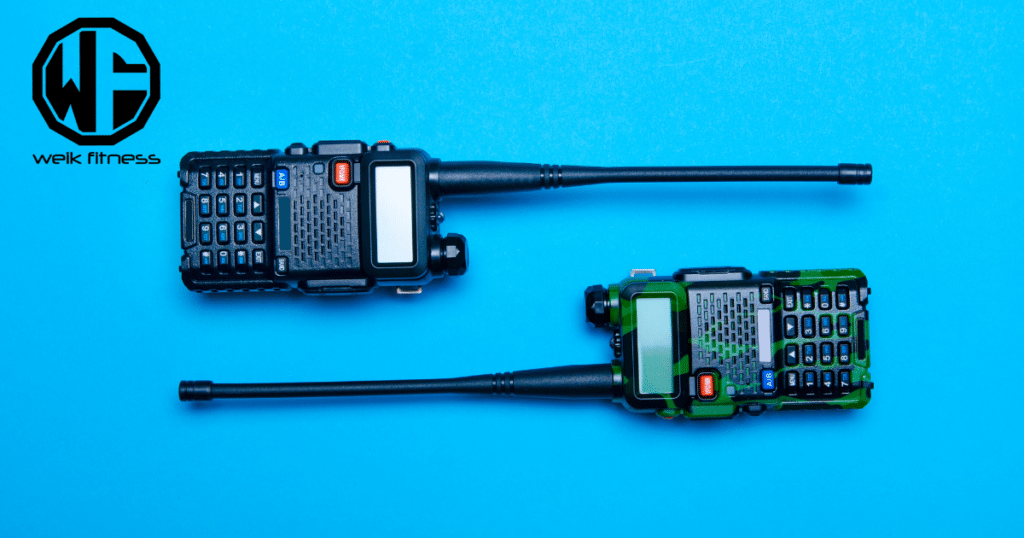
Understanding Ham Radio
Ham radio is a powerful tool for two-way communication. It lets people talk over long distances using radio waves.
We use it to talk with others across long distances without cell phones or internet. It works by sending radio waves through the air.
These waves carry our voice to other radios tuned to the same frequency.
People seem to think that you can grab a ham radio or a two-way radio and talk to anyone, regardless of where they are in your country or state — that’s not totally accurate. Sure, it’s possible to talk to anyone anywhere, but in order to do that, you’d have to be highly skilled and have all of the equipment needed (much more in-depth and on a completely different skill level than most of us reading this article).
When you think about using a ham radio or two-way radio, think along the lines of “line of sight.” If you have huge buildings between you and who you want to communicate with, or there are gigantic mountains between you and who you’re trying to reach, the signal more than likely will not make it there (and if it does, there is a high chance it will be broken up and full of static).
RELATED: Creating a PACE Plan — Emergency Communications & Contingency
Your best bet when trying to communicate is to be somewhere flat with not much between you and the other radio. If comms aren’t working, go to a higher position, such as a hill, and try your transmission again.
Ham radio needs no cell towers or satellites to work. This makes it great for emergencies when other systems fail. Here comes the tin-foil hat conspiracist out of me, but think along the lines of the grid getting attacked or going down. Or even a case where a winter storm hits your area and knocks out power and communications. It’s a real possibility.
In order to stay connected with people and ensure everyone is safe, we just need a ham radio (two-way radio), an antenna, and a power source to stay connected (such as a battery with some backups for your radio).
Historical Significance of the Two-Way Radio
Time to get nerdy! Amateur radio has deep roots in our history. It began in the late 1800s and has grown quickly in use since then. The first radio club started at Columbia University in 1908.
In 1912, the government set rules for radio use. They gave amateurs frequencies above 1.5 MHz. This was a big step. It made ham radio “official.” Then, in 1923, we made our first contact across the Atlantic.
An operator in England talked to someone in Connecticut. This proved ham radio could reach far. It opened doors for global communication.
The Life-Saving Role of a Ham Radio or Two-Way Radio
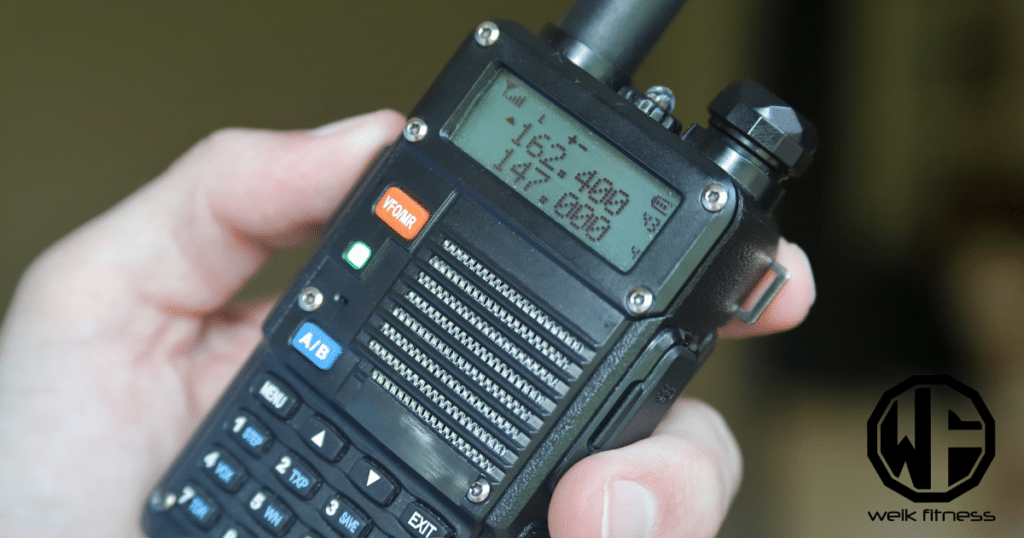
Ham radios can be lifesavers in emergencies. These two-way radios work when other communication methods fail, helping people call for help or coordinate rescue efforts.
Let’s look at some practical uses and understand why you should absolutely consider getting a couple of ham radios as part of your emergency preparedness.
1. Emergency Communications
Ham radios play a crucial role in emergency communications. Let’s unpack how these two-way radios can be lifesavers in critical situations.
- Reliable during disasters: Ham radios work when cell towers and power grids fail. They’re key for contacting help in storms, earthquakes, or other crises.
- Wide reach: We can talk to people across town or around the world. This global network is vital for getting news and aid during large-scale events.
- No infrastructure needed: Our radios work without cell towers or internet. We can set them up anywhere, anytime, making them perfect for remote areas or disaster zones.
- ·mergency networks: Many areas have ham radio emergency networks. These groups train and prepare to help in crises, working with local authorities.
- Weather alerts: We get real-time weather info through ham radio. This early warning can save lives in severe weather events.
- Health and welfare checks: Ham operators help relay messages about people’s safety to worried family members after disasters.
- Tactical team comms: In grid-down scenarios, tactical teams use ham radios for secure, reliable communication. Brands like Baofeng and Yaesu offer good options for beginners.
- Easy to learn: Getting started with ham radio is simpler than many think. Basic operation can be learned quickly, though mastery takes time.
- Community support: The ham radio community is friendly and helpful. Are there still some ham fuds out there who want to tell you how dumb you are? Of course. But for the most part, the community out there is always ready to assist new operators in learning the ropes.
- Low-cost entry: Basic ham radio setups can be affordable. This makes them a great option for preppers on a budget.
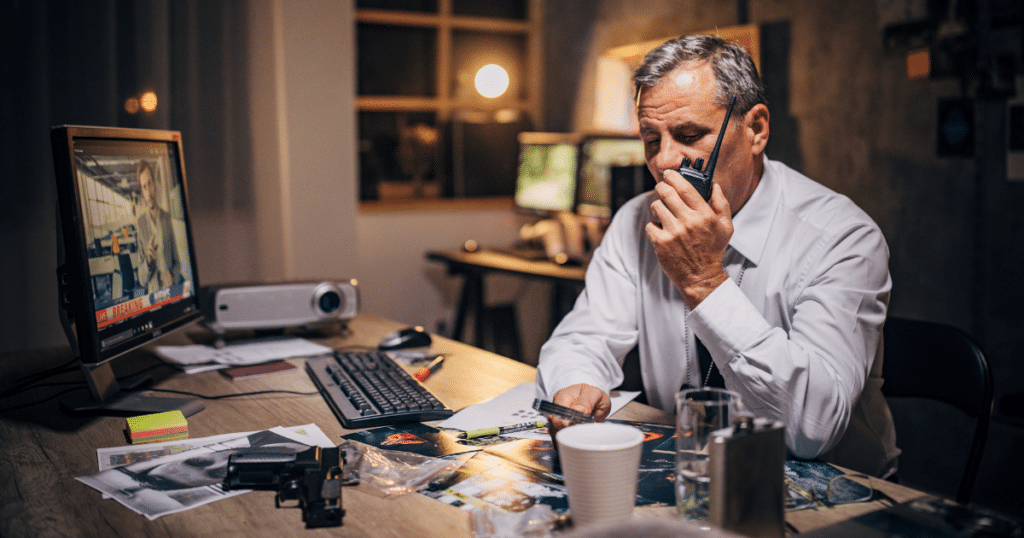
2. Disaster Response and Recovery
Ham radios play a crucial role in disaster response and recovery. We’ve seen their importance in events like 9/11 and Hurricane Katrina. Below is some more valuable information.
- Quick setup: We can deploy ham radios fast when other systems fail.
- Wide reach: Our signals can travel far, connecting isolated areas.
- Power flexibility: We use batteries or generators to keep comms running.
- Volunteer network: Ham operators form a ready team of skilled communicators.
- Info relay: We pass vital info between emergency services and victims.
- Health aid: Hospitals in Georgia now use ham radios for emergencies.
- Grid-down ready: Our radios work when power grids and cell towers don’t.
- Tactical team support: We provide comms for search and rescue groups.
- Community building: Local ham clubs offer training and support.
- Public service: Help coordinate relief efforts and supply distribution.
- Ongoing updates: Ham operators give real-time reports on changing conditions.
- Backup systems: Our radios serve as a failsafe when main comms go down.
- Global network: We can reach out worldwide for help if needed.
3. Ham Radio Operator for Tactical Teams
Tactical teams use ham radios as part of their comms plan. These two-way radios allow a team to move and communicate in chaos and ensure the safety of all those in a particular company.
- Tactical teams use ham radios for clear, secure comms
- Allows groups to move, shoot, and communicate when patrolling or on ops
- Interconnected networks allow teams to share info and resources
- Handheld units let team members move freely while staying connected to a line
- Base stations provide longer range for command centers
- Repeaters extend signal range for wider coverage areas
- Encryption options keep sensitive info private
- Units like the Yaesu VX-6R are submersible for training or working in rain
- Multiple channels allow separate comms for different team units
- Push-to-talk features enable quick, efficient communication through ear pro
Essential Ham Radio Equipment
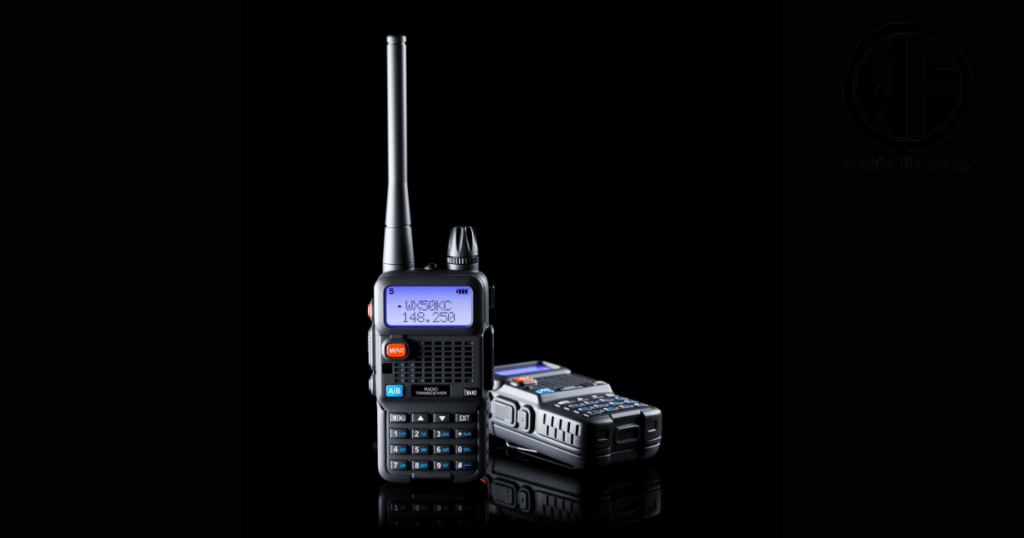
Ham radio gear can save lives in emergencies. You’ll need a few key items to get started.
1. Transceivers
We rely on transceivers as the heart of our ham radio setup. These devices let us both send and receive signals. The Yaesu FT-60R is a great choice for many preppers. It offers great range and works on many frequencies.
This radio has a special feature called Emergency Automatic ID. It helps find users who are in trouble. Other good brands include Baofeng, which makes affordable options for beginners.
If you’re on a budget, the Baofeng UV-5R is a great option and is used by many people.
Those looking for a two-way radio that can do it all and is submissible, you can’t go wrong with the Yaesu VX-6R. It’s pricey, but it’s also considered the best out there by many in the radio community who know way more than I do.
When choosing a transceiver, look for one that’s easy to use and has a long battery life. These traits are key for grid-down scenarios where power might be scarce. All of the models mentioned above check all the necessary boxes.
2. Antennas
Antennas are the lifeline of ham radio. We need good antennas to talk far and clear. VHF and UHF antennas help us reach other operators nearby. For longer chats, you can use HF antennas.
When it comes to recommending a good antenna for your two-way radio, it truly comes down to your needs and use applications. If you’re a team guy and wearing a plate carrier, you’re going to need a flexible antenna that you can weave through your molle and keep it out of the way so it doesn’t snag on things. If you’re using it around your property, you can probably get away with the OEM antenna that came with your unit. For longer communication, consider a long whip antenna.
There are so many options that you truly need to do some research or ask around in the groups you want to work with or communicate with to find out what they use and recommend.
But overall, it can’t be stressed enough how vital antennas are. They make or break your radio setup. A good antenna lets you talk to people miles away. It helps in emergencies, too. With the right antenna, you can call for help even when cell phones don’t work.
3. Power Supplies
Power supplies are crucial for ham radio operation. We need a reliable source to keep our radios running.
While there’s nothing wrong with the battery that comes with your ham radio or two-way radio, it’s always a good idea to purchase backup batteries, and even the extended batteries that are longer can hold more power, lengthening your use.
In addition, having adapters that plug into your home to charge up your radio, getting a car charger, and all the necessary accessories is recommended to ensure you’re prepared to use your two-way radio and not have it die on you after minimal use.
Tremis Dynamics Day 0 – Radio Ops: After Action Report (AAR)
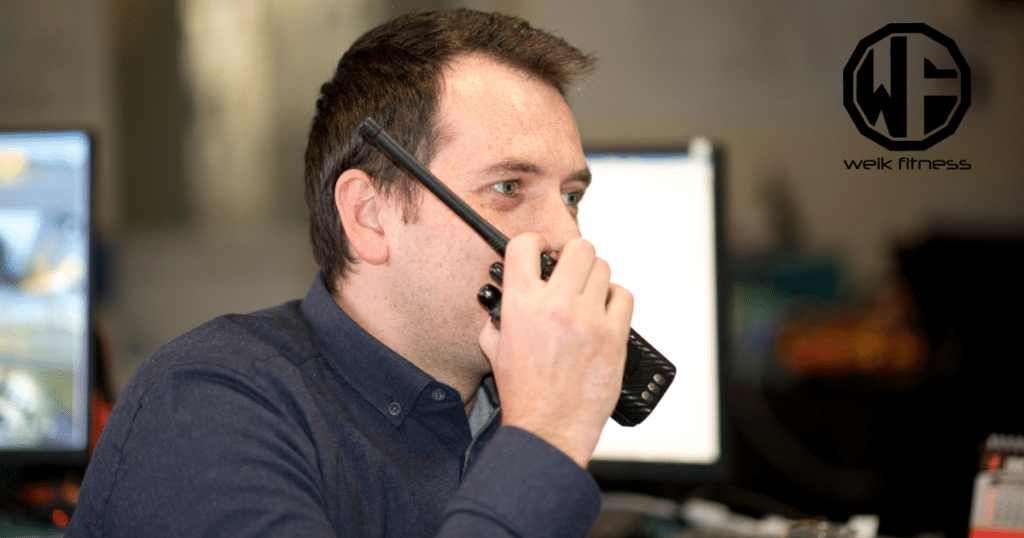
If you are looking at getting your first ham radio or you already have a two-way radio with zero idea how to use it, get yourself signed up for the Tremis Dynamics Day 0 – Radio Ops class.
I’ve had a Baofeng UV-5R for years and have several just like it in various packs, vehicles, etc. That said, I tried to read The Guerrilla’s Guide to the Baofeng Radio, and after a handful of pages, I thought I was reading a book in a foreign language. I’m very much a hands-on person. I need to physically see, watch, and do something in order to grasp it, and this class was perfect for how I prefer to learn.
Mike Fiore was the lead instructor along with the owner of Tremis Dynamics, Garry Marr, who was also there adding a ton of value.
What I liked about the class was that Mike was very interactive with the class. Asking questions and engaging us to answer questions. The first half of the class was in a classroom setting where he went over his PowerPoint presentation, and we took notes (if you take a class and don’t take notes, save your money and just don’t go). Taking notes is incredibly important — no matter the class you’re taking.
RELATED: Budget Tactical Comms Setup — Building Your Radio Comms Setup
Mike knows his way around ham radios and two-way radios but was able to present the information in a way that made sense to beginners. I’m sure he could go “ham” and dive in deep and seemingly speak in a different language with all the knowledge he has on these handheld radios.
The class immensely helped me understand how to better use my Baofeng UV-5R. There were things on it that I never knew existed as well as saw it on the controls but never knew what it meant or did. That said, he emphasized the point that you should learn how to use any radio, not just your own.
We discussed COMSEC (communication security), the fact that ham radios are not discrete, the differences between VHF and UHF bands, which you’d want to use when and why, as well as different frequencies.
Additionally, we went into an area that everyone wants to know first… GEAR. We discussed why the quality, capability, and usability are important, which two-way radios he recommends, and crucial things to consider before you make your first ham radio purchase.

After the classroom session, we dove into the hands-on application part of the class. Honestly, this section alone was worth every penny of the cost of the class. This showed you where the two-way radios truly shine and where some of the downfalls are.
Mike taught us how to enter a frequency, do a radio check, what emergency frequencies we should all have in the memory of our ham radios, and how to create a plan before everyone begins the “test.”
Throughout the hands-on practice, we got to use all the skills Mike taught us in the classroom. Were there mistakes? Yes. Did I make my own share of mistakes? Yup. But it’s getting in the reps that help us improve. When we first started the testing, I was pretty uncomfortable due to my lack of experience. But by the end of it (within 40 minutes), I felt totally comfortable and felt like I was doing well using my two-way radio along with the lingo and call signs designated.
Overall, I truly feel like this is a class that everyone should take. Even if you aren’t into firearms, knowing how to use a ham radio or two-way radio is extremely useful in an emergency or when you need working comms that aren’t connected to the grid or internet.
When I reached out to Mike Fiore, the Tremis Dynamics Lead Instructor for the class and owner of Bulletn.net, after the class for a quote to add to this article, he mentioned that:
“Many people buy a $30 radio and believe that when the time comes, they’ll be able “rise to the occasion” and effectively communicate. The reality is that you need to learn a great deal and put in a bunch of time practicing to achieve a base level of proficiency. But once you do, that one tool can be an absolutely game-changing force multiplier in keeping your family safe or making your team more effective.”
Below are some bullet points for the Tremis Dynamics Day 0 – Radio Ops class, a beginner-level course that teaches you how to use handheld radios in emergencies.
- Learn mechanical skills for radio use
- Practice talking without modern devices
- Cost: $225
- Focus on two-way radios like Baofeng and Yaesu
- Understand how radios can save lives in grid-down events
- Get hands-on training with comms
- Master basic radio functions and controls
- Learn to set up antennas for the best signal
- Practice clear and concise radio speech
- Learn to use radios for group coordination
- Gain skills for emergency info-sharing
- The gear list includes: An open mind, a notepad and pen, and a handheld radio if you have one already (no need to purchase one if you don’t already have one, they have loaners available to use)
Get a Ham Radio or Two-Way Radio and Get Some Training!
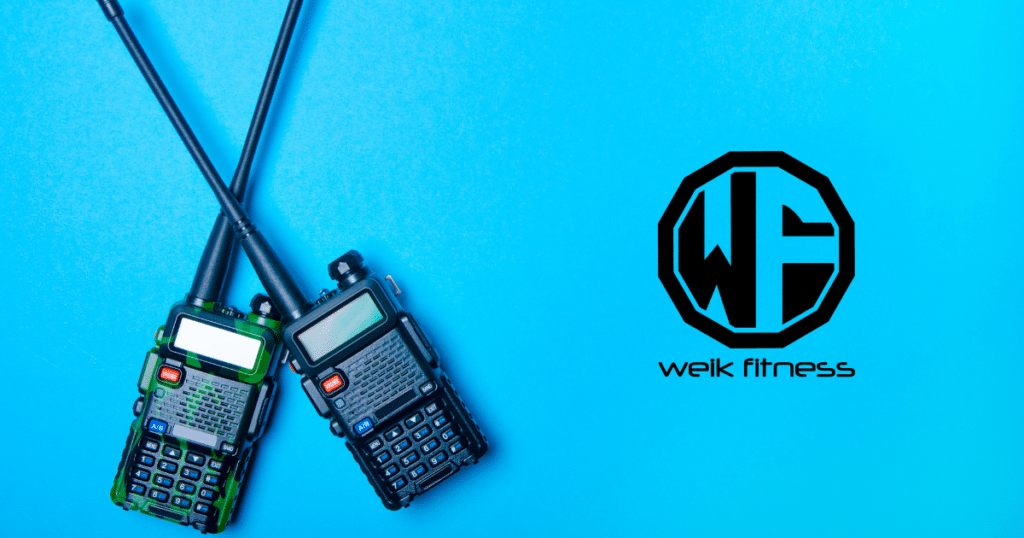
Ham radio and two-way radios save lives. They work when other systems fail. We’ve seen its power in disasters and emergencies.
Learning to use it is easy and fun. Take the class from Tremis Dynamics and learn how to get started. All you’ll need to do is grab a radio, and you’ve taken the first step to being more prepared for you and your family.
Being able to use a ham radio or two-way radio is a skill that could make all the difference one day!
Ham Radio and Two-Way Radio Resources
- http://www.arrl.org/what-is-ham-radio
- https://hamradioprep.com/history-of-ham-radio/
- https://www.georgiahealthnews.com/2014/04/ham-radio-old-technology-lifesaver-emergency-field/
- https://www.researchgate.net/publication/323809863_Amateur_radio_communications_in_a_disaster_preparedness_simulation_When_all_else_fails_amateur_radio
- https://domesticpreparedness.com/articles/unleashing-the-power-of-amateur-radio-in-times-of-emergency
- https://offgridsurvival.com/survivalcommunicationshamradio/
- https://willowhavenoutdoor.com/what-is-the-best-ham-radio-for-preppers/
- https://moonrakeronline.com/us/blog/what-equipment-is-needed-for-ham-radio
As a side note to close out this article, if you want to support our website and are in need of any tactical gear (or any product for that matter), anything you purchase using our links below will provide us with a small commission. We don’t charge for our free content and our goal is to keep it that way. We don’t have a Patreon account to put things behind a paywall, nor do we sell pics of our feet on OnlyFans.
If you choose to use the links below and make a purchase (at no additional cost to you), we greatly appreciate your support as it helps us continue to publish free content (like this article) on our website:
- Optics Planet (use code SAS5 at checkout for 5% off)
- Amazon
We have also partnered with CCW Safe. It’s the concealed carry coverage that I personally have for myself and my family in the event we need to defend our lives. Feel free to use our CCW Safe link to sign up and get some coverage to protect yourself and your family.
Also if you have a product you would like us to check out and potentially review, please contact us and let’s discuss.


*Disclosure: This article may contain affiliate links or ads, which means we earn a small commission at no extra cost to you if you make a purchase through these links. These commissions help support the operation and maintenance of our website, allowing us to continue producing free valuable content. Your support is genuinely appreciated, whether you choose to use our links or not. Thank you for being a part of our community and enjoying our content.
PLEASE CONSIDER SHARING THIS ON YOUR SOCIAL MEDIA TO HELP OTHERS LEARN MORE ABOUT THIS TOPIC.


